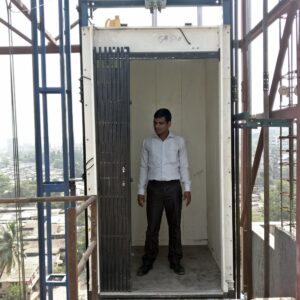It requires a vertical lift system that can transport workers and materials to overhead work sites safely in construction undertakings. Passenger Material Hoist are used as the foundation of an effective construction process as their systemology integrates the functions of the personnel transfer with the lifting of the cargo. These multi-functional machines have changed how construction units engage in the project to construct multi-story construction by eliminating the labour of carrying materials and climbing many floors, which was conducted manually and time-consuming. However, when making the choice of the most suitable hoist that will suit your unique project requirements, there are several aspects of it that one should pay attention to.
- Evaluate Load Capacity Requirements Thoroughly
The footing for the success of the hoist selection lies in the comprehension of what the project will weigh. Construction sites all have their peculiar material handling requirements, which involve light materials such as tools and supplies to heavy structural materials and equipment. First, develop a careful examination of the heaviest loads that you expect to haul, both materials and how many personnel will use the hoist at one time.
- Assess Height and Reach Specifications Carefully
Vertical reach ability has a direct effect on the efficacy of your hoist on the construction timeline. Determine the highest point that your project will need and any additions or changes that could raise the height of the building when under construction. Take into consideration not only the desired building height but also the height in between where the workers and materials would require access at certain stages of the building progression. Determine the adaptability of the hoist in your project as the project advances.
- Prioritize Safety Features and Certifications
The consideration of safety should never be undermined when choosing passenger material hoists to be used in an external construction lift. Seek hoists that have inclusive safety features comprising exhaustive safety systems such as emergency stops, overload protection, and automatic shutting braking systems that engage in the event of loss of power. Make sure that the hoist you are using is up to or better than all industry regulations concerning safety and certifications by established testing bodies. Investigate the quality of safety barriers, gates, and enclosures that cover operators and passengers in the course of transport activities.
- Consider Operating Environment and Site Conditions
Environmental conditions found within your construction area are a major factor that contributes to hoists’ performance and durability. Assess considerations like wind exposure, weather protection needs, and ground stability at the location where the hoist will be installed. Look at your site: is it in an extreme, humid, or corrosive environment that could influence equipment operations and maintenance requirements? Due to space constraints that may hinder the position of hoists or their ability to operate, overhead objects, surrounding structures and utility lines must be gauged.
- Balance Cost Factors with Long-Term Value
Intelligent financial planning is not just limited to the cost incurred at the time of making the first purchase or renting, but also all costs associated with ownership. Analyze initial investment of costs spent on long-term operational costs such as maintenance, repair, fuel consumption, electricity or light consumption, or the cost of training operators.
Conclusion
The top passenger material hoist and an essential chairlift manufacturer would be selected based on the extensive deliberation of the capacity, height needs, safety alternatives, site conditions, and the whole costs among others. You should carefully appraise such considerations to ensure that you make valid decisions that will help in the adoption of equipment that will enhance productivity without reducing safety standards.


